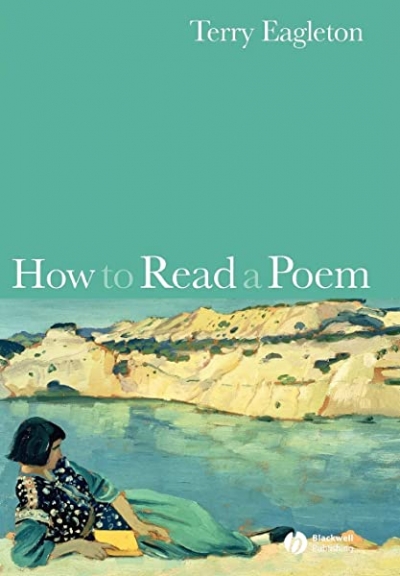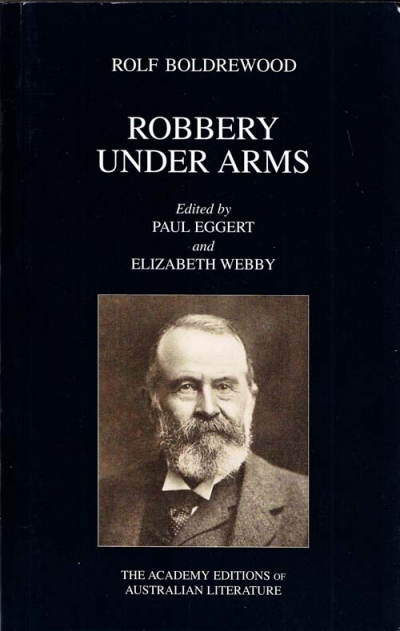Literary Studies
Water From the Moon: Illusion and reality in the works of Australian novelist Christopher Koch by Jean-François Vernay
Reading literary criticism can be like viewing a portrait: you are essentially subjected to another person’s vision of the subject. One can feel that the perspective is unduly harsh at some points, lavishly lenient at others. It is easy to project one’s own bias onto the work, and to take issue with the representation too quickly. This is particularly true of a critical monograph on a subject such as Christopher Koch, who has been both prominent and controversial throughout his career. It is difficult for any commentator on Koch not to be drawn into the ‘Australian Melodrama’ that Peter Pierce identified in Australian literary culture in 1995.
... (read more)The English critic Terry Eagleton is nothing if not a dasher. Once suspected by many as the kind of postmodern theorist who undermined the category of ‘literature’, he has increasingly hiked into its territory. In The Illusions of Postmodernism (1996), he turned against the kinds of scepticism and virtuality which he saw as demeaning all literary or cultural study. The book certainly made some of his former allies quite cross, not least because it was penned with such rhetorical high spirits. His Marxist foundations, sturdily nourished in a Salford boyhood, remained, however, and were built upon. Yet they are sometimes twinned with residues of Catholic belief, as his recent attack on the atheism of Richard Dawkins has shown, full as it is of residual theology. He can certainly be an odd kettle of fish. In How to Read a Poem, Eagleton takes a broad brush. He remains at home with the traditional texts, the kinds of poems we have long deemed important.
... (read more)Dictionary of Literary Biography, Volume 325: Australian writers, 1975–2000 edited by Selina Samuels
This volume is the fourth and last dealing with Australian writing in this American series of reference books. All four volumes have been edited by Selina Samuels; the editor and contributors are Australian. Fifty-seven writers who produced their first major work after 1975 are included.
... (read more)In Doubling The Point (1992), one of J.M. Coetzee’s earlier collections of criticism, there is a long, closely argued essay titled ‘Confession and Double Thoughts: Tolstoy, Rousseau, Dostoevsky’. It has a more scholarly flavour than much of Coetzee’s subsequent non-fiction – collected in Stranger Shores (2001) and his latest volume, Inner Workings – but it is a characteristically lucid piece of analysis that throws an interesting light on his ideas about the imperatives of writing.
... (read more)Antipodes vol. 20, no. 2 edited by Nicholas Birns & Australian Literary Studies vol. 22, no. 4 edited by Leigh Dale
In an essay for Australian Literary Studies (ALS) exploring the modernist networks of Judith Wright and Frank Scott, Anouk Lang argues that ‘participation in modernist little magazines … was crucial to their development as writers. Publication in these journals validated their tentative efforts and imbued them with confidence to move on to further ventures.’ It is a terrific recommendation for the important role that literary journals continue to serve for writers – both emerging and established, creative and academic. ALS and Antipodes provide vigorous examples of two such journals which support the fostering and fortification of literary culture in Australia.
... (read more)Robbery Under Arms by Rolf Boldrewood, edited by Paul Eggert and Elizabeth Webby
Rolf Boldrewood’s Robbery Under Arms is the ninth volume to be published by the Academy Editions of Australian Literature project. Edited by Paul Eggert and Elizabeth Webby, the handsome volume is a major addition to this growing library of classics of Australian writing. It will undoubtedly become the definitive critical edition of Robbery Under Arms; the comprehensive scholarship that accompanies this book will illuminate our teaching and thinking about Boldrewood’s classic in the twenty-first century.
... (read more)Writing The Story Of Your Life: The ultimate guide by Carmel Bird
While Australian women in particular have been avid diarists and letter-writers, the activity du jour is overwhelmingly the writing of memoir, inspired by the notion that everyone’s life is memorable and worth recording. Some memoirists are searching for the truth of their lives, to recover the past or perhaps recover from it. Some are simply recording their story for family consumption. Others, the more ambitious, are seeking publication and fame. Carmel Bird’s advice to them – ‘Stay young. Stay Beautiful. And maybe climb Everest with your eyes shut’ – is the only pessimistic comment in this whole book.
... (read more)Mind the Country: Tim Winton's fiction by Salhia Ben-Messahel
University of Western Australia Press should be commended for recognising a significant gap in Australian literary scholarship: a book-length study on the work of Tim Winton. Aside from Tim Winton: A Celebration (1999; not a critical work), and Michael McGirr’s Tim Winton: The Writer and His Work (1999), written for young readers, there have been no major studies of his work and little critical commentary. Is Peter Craven’s response to Dirt Music (2001) – which he called a ‘profoundly vulgar book’ that ‘bellyflops into a sort of inflated populism’ – widely shared? Is Winton on the nose because he is popular? Certainly, there is nothing sexy about Winton’s work; it embodies wholesome and worthy values, without shying away from stories where these values are absent. But he is a damn good writer – a difficult thing to measure, I know. His work resonates for many people. Whether they adore it or hate it (think Cloudstreet [1991]), people who have read Winton have an opinion on him. Winton’s work, particularly The Turning (2004), prompts interesting questions about contemporary Australian life.
... (read more)The title of Richard J. Lane’s guidebook contains a small allusion to the changes that have occurred in literary studies over the past half-century. There was a time when universities trained critics; these days, everyone is a theorist.
... (read more)The Oxford Book of American Poetry by David Lehman
Thirty years have passed since Richard Ellmann’s magisterial New Oxford Book of American Verse: a hard act to follow. Now David Lehman – poet and founder of the Best American Poetry series – has produced a successor. It is even longer than the Ellmann, and similarly generous in its individual choices. There is no stinting here, no mark of the tyranny of permissions that blights so many anthologies. Walt Whitman gets seventy poems; Emily Dickinson (who published a handful in her lifetime) has forty-three, including the cautionary ‘Publication – is the Auction / Of the Mind of Man’.
... (read more)










